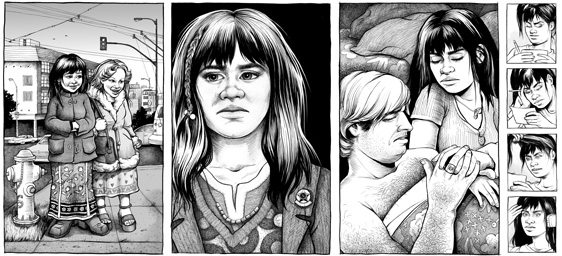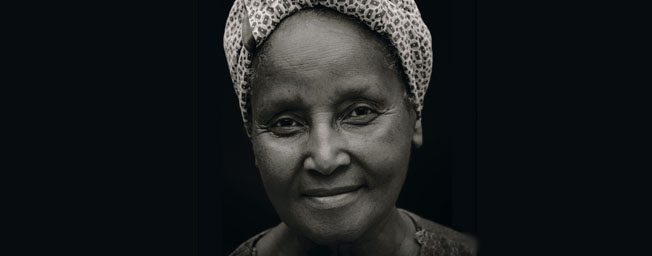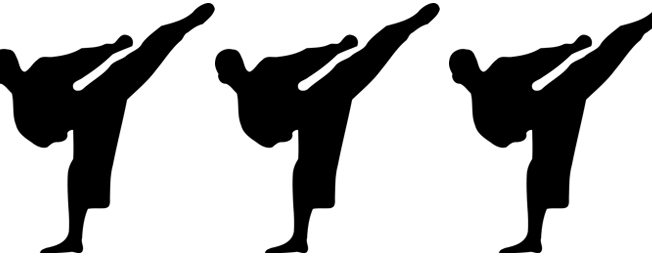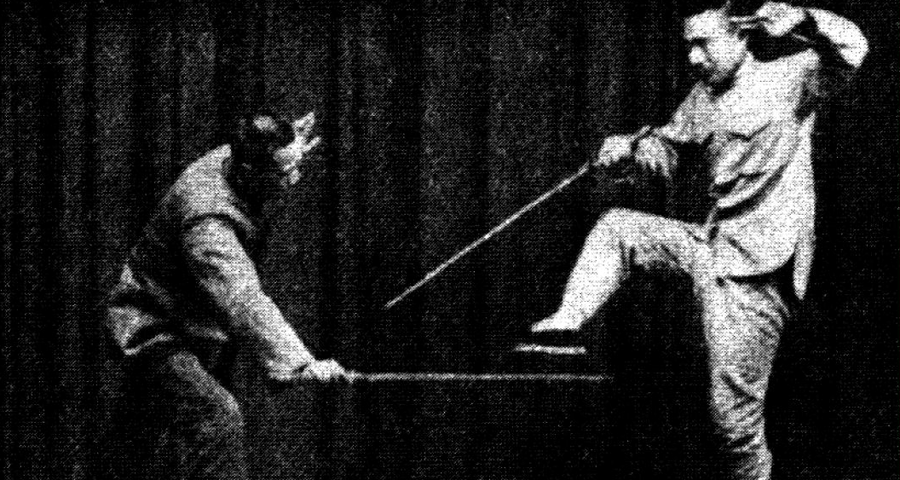
The Origins of Wudang Sword
Categories: Martial Arts
Wudang Sword—it’s a form of Chinese swordplay that can be described as nothing other than graceful, beautiful and powerfully awe-inspiring. The first images to be conjured in the minds of many Americans are the spectacular dueling scenes in Crouching Tiger Hidden Dragon, the most famous example of Wudang Sword to sweep across the United States. However, if you have yet to watch the video above, I highly recommend you do so before continuing. To see masters of this art in action is to witness a ballet of cool, calculated warfare; each movement of the limbs and swish of the blade is exact, and potentially deadly. However, Blue Snake Books’ mission to safely demystify the secrets of martial arts continues with Dr. Lu Mei-hui’s translation of Huang Yuan-xiou’s explanation of this ancient form in The Major Methods of Wudang Sword. This respected school of swordplay is not meant to be practiced by the undedicated, so do yourself a favor and read up on the origins of Wudang Sword before hunting down your own sword on Craigslist?
From the Translator’s Introduction: “A Brief History of Wudang Sword of the Dan Sect”
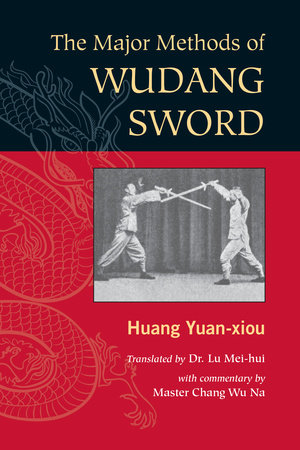 Wudang Sword is arguably the most famous and respected style of swordplay in China’s history. It has a lineage reaching back more than five hundred years to the Ming dynasty, has been written about in dozens of Chinese martial arts novels, and has been featured in many Gong Fu movies, most notably Ang Lee’s Crouching Tiger, Hidden Dragon. There are numerous styles of swordplay originating from Wudang Mountain.
Wudang Sword is arguably the most famous and respected style of swordplay in China’s history. It has a lineage reaching back more than five hundred years to the Ming dynasty, has been written about in dozens of Chinese martial arts novels, and has been featured in many Gong Fu movies, most notably Ang Lee’s Crouching Tiger, Hidden Dragon. There are numerous styles of swordplay originating from Wudang Mountain.
Of these styles, the techniques originating from the Dan Pai (Dan sect) of Wudang are respected as a treasure in the martial arts world. However, even with all of this notoriety in China, the Wudang Sword of Dan Pai is still a relative mystery in the West. With this short introduction, we hope
to shed a little light on what Dan Pai Wudang Sword is and exactly where it came from.
Swordplay is a major technique on Wudang Mountain, as the straight sword (jian) is used in many Daoist rituals. Since Wudang Mountain is a Daoist holy site, the sword is a commonly seen tool. Originally the sword was a focusing tool for the priest when performing traditional rituals and ceremonies. Gradually it was used more and more as a weapon that the Daoist monks could always carry with them.
There are numerous styles of swordplay originating from Wudang Mountain, all of them great in their own way. Wudang Sword from the Dan Pai of Wudang was created on the mountain, which is in China’s Hubei Province, by the great Daoist master Zhang San-feng. This master is also reputed to have created Taiji Quan as well as many internal cultivation techniques. Because of this, Zhang San-feng is a legendary character in internal martial arts as well as Chinese martial arts as a whole.
Zhang San-feng took nine disciples, and each became the head of his own branch of Wudang martial arts. The original nine branches were represented by the Chinese characters zi, zhu, ji, fu, jian, qi, fu, chou, and dan. These nine branches, or pai in Chinese, not only had different names but also had different techniques. The first three pai focused on nei gong, cultivating internal power. The next three focused exclusively on the use of throwing knives. The last three pai, including Dan Pai, focused on Wudang Sword techniques.
The techniques of Dan Pai Wudang Sword are extremely rich. Although the lineage holders of Wudang Dan Pai were wandering Daoists and thus did not belong to any single temple, the sword techniques that encompass the system were practiced by Daoists in the temples as well. Wudang Sword techniques of Dan Pai originally focused on the skill of reaction and improvisation in combat when it came to the movements. Therefore, one of the ultimate methods of practice was an improvised solo practice form that utilized all the techniques in the system in a free-flowing manner. This was called Wu Jian, or Dancing Sword. This method of practice still exists today, although it can only be attempted after learning the other solo sets that teach the practitioner how to wield the sword.
Another coveted practice method in the Wudang Sword arsenal is Fei Jian, or Flying Sword, in which the sword practitioner employs the use of throwing daggers in the shape of tiny swords to attack foes from a distance.
The first-generation lineage holder of Wudang Dan Pai was Zhang Song-xi. From Zhang Song-xi, the art was passed down through the generations. While each lineage holder of Wudang Dan Pai may have taught many students, each master only took one disciple as his successor. The eighth-generation lineage holder of Wudang Dan Pai was Zhang Ye-he, and he broke with tradition to take the first non-Daoist monk as his successor. That disciple was Song Wei-yi. Song Wei-yi’s Wudang Sword was quite incredible. Every day he would practice his sword techniques with both a regular-sized sword and a six-foot-long sword, and his Flying Sword techniques were famous. Song Wei-yi passed his art on to Li Jing-lin, who became the most famous swordsman in China during the early twentieth century.
Li Jing-lin, nicknamed “Immortal Sword Li,” was known throughout China as a master swordsman, often winning duels against other sword masters of the time. He was a general in the military as well as a leader in the martial arts community. He was also one of the creators of the Nanjing Central Martial Arts Academy, the most famous and influential martial arts school during the Republican era in China, and was one of the chief coordinators behind the first national Chinese martial arts fighting competition in 1929.
Li Jing-lin had begun practicing martial arts when he was young, as he came from a martial arts family. Later on, when he was attending military academy in Baoding in 1905, he was introduced to Song Wei-yi and was fortunate enough to train with him in Dan Pai Wudang Sword. Li Jing-lin learned many techniques from Song Wei-yi and was eventually chosen by him to become the tenth-generation successor of Wudang Dan Pai. Li Jing-lin used his previous knowledge of swordplay to complement his Dan Pai Wudang Sword and added many techniques to his Dan Pai swordplay; this was in accordance with other masters of Dan Pai, who had added techniques to their system from other popular sword styles of the time. What set Li Jing-lin apart, however, was the vast amount of knowledge he had of other sword systems. Besides training with Song Wei-yi, he undoubtedly trained with other people in various other sword styles. Li Jing-lin was a sword expert who devoted his life to researching and improving on the art of Wudang Sword.
Li Jing-lin left a great mark on Wudang Sword. He popularized Wudang Sword in China and made it very well respected in the martial arts world. Before Li Jing-lin, Wudang Sword was known, but not many people had actually seen it, as it was practiced only by monks and hermits. Li Jing-lin was also a great innovator of martial arts. Besides teaching the traditional Wudang Sword forms and techniques, he also created several forms of swordplay as well as adding to previous traditional sets in an attempt to make his art more accessible to students. The first form passed on to disciples was Xing Jian, or Continuous-Stepping Sword, which incorporated the stepping from Bagua Zhang and made it easier for disciples to get to the stage of practicing Wu Jian. The second form was Dui Jian, or Two-Person Dueling Sword, to improve the disciples’ understanding of Wudang swordfighting applications.
Another form passed down was Liu Lu Wudang Jian or Six-Section Wudang Sword. This form was rarer than other sets as it was not passed down to as many people. Because of all the forms of Wudang Sword that were introduced by Li Jing-lin, his successors had a multitude of techniques to learn. Some of them specialized in the Dui Jian forms; others focused on the solo sets. Because Li Jing-lin had learned so many forms, students who trained with him at different times would learn different sets. Some people learned Xing Jian, while others learned Liu Lu Wudang Jian. After Li Jing-lin died, his students carried on the art form that they had been taught, creating their own sub-branches.
In Beijing, Li Yu-lin, one of Li Jing-lin’s later disciples, continued to teach the sword techniques of Dan Pai. He was taken as a disciple by Li Jing-lin in Hangzhou in 1929. Li Yu-lin passed the system on to his son, Li Tian-ji, who wrote many books on Wudang Sword and Chinese martial arts. His specialization was Wudang Taiji Sword and Wudang Dui Jian, on which he published a book, Wudang Jian Shu (The Art of Wudang Sword).
In Changzhou, Li Jing-lin’s top disciple, Yang Kui-shan, passed on the system he learned from his master. Yang Kui-shan had been taken as a disciple by Li Jing-lin in 1920 in Tianjin. He was the first disciple taken by Li Jing-lin and later served as Li Jing-lin’s second in command and personal bodyguard. After 1926, as Li Jing-lin gradually became busier, it became Yang Kui-shan’s job to teach Li Jing-lin’s disciples when Master Li did not have time. To further improve the abilities of his disciples, Li Jing-lin sent Yang Kui-shan to train with numerous other masters in various styles of Wushu. Because of this, Yang Kui-shan was able to train with masters such as Shang Yun-xiang, Li Shu-wen, and Sun Lu-tang, among others. Yang Kui-shan passed down Wudang Xing Jian and Dui Jian as well as numerous other bare-hand and weapons forms, as his specialization was in Wudang Xing Jian and he was an expert in bare-hand and weapons combat. He passed his system to Qian Timing, Wu Zhi-quan, Chang Ming-xiang, and Sha Ming-xi. Unfortunately, due to his poor level of literacy, Yang Kui-shan never published any material on the art his master had passed on to him. However, his disciples and grand-disciples have published more than one hundred articles in China and the United States on the system he taught.
In Tianjin, Meng Xiao-feng taught the sword techniques of Li Jing-lin. Meng Xiao-feng was a general in the military and was good friends with Li Jing-lin. From Li Jing-lin he learned the traditional six-section form of Wudang Sword, the Dui Jian fighting form, as well as the knife-throwing technique, Fei Jian. Meng Xiao-feng passed all of these techniques to his single successor, Ma Jie. Meng Xiao-feng wrote a book titled Wudang Jian Pu (The Song of Wudang Sword), which he passed on only to his successor, Ma Jie.
The author of this book, Huang Yuan-xiou, was taken as a disciple by Li Jing-lin in 1929 in Hangzhou. He was already a well-known martial artist at the time, and his specialization was in Wudang Dui Jian. Although he did not train with Li Jing-lin as long as some of the other disciples did, he was able to get a firm understanding of the fundamental techniques of the system. He was highly educated and was able to pick up the techniques taught to him in a short amount of time. Huang Yuan-xiou made a great achievement in the art of Wudang Sword by publishing this book. It was the first of its kind to show actual photographs of practitioners applying the art of Wudang Sword in combat. He passed his system on to Chen Zhao-xiang, Jiang Guang-hua, Yeh Jing-cheng, and Sheng Zhong-tai.
Of the modern masters of Wudang Sword in China, one of the highest is Ma Jie of Tianjin. Master Ma Jie, born in 1925, was trained from the age of six as a Daoist monk, and at the age of eight he became a disciple on Wudang Mountain. After mastering the internal martial arts of Taiji Quan, Bagua Zhang, and Xingyi Quan, he met and was taken on as a successor to Meng Xiao-feng. Although he was injured during the Cultural Revolution in China, Master Ma was still chosen as successor by Meng Xiao-feng because of his love of and dedication to martial arts. Master Ma used the techniques of Wudang martial arts to heal himself when no doctor would treat him. After practicing for some time, he was able to heal completely.
From Meng Xiao-feng he learned the Wudang Sword solo set as well as Dui Jian. In addition, Master Ma learned Wudang Fei Jian. In China, he has written numerous articles on Wudang Sword and published a bestselling book. Master Ma has taken thirty-two disciples. Among them are
the translator and commentator of this book, Lu Mei-hui and Chang Wu Na, who are his closed-door disciples and global representatives.
Another famous modern master of Wudang Sword is Qian Timing, who was born in 1929 and was taken as disciple by Li Jing-lin’s top disciple, Yang Kui-shan, after suffering a life-threatening illness. After training for some time, Master Qian recovered completely and decided to commit himself to training in this system. For more than fifty years he honed his Gong Fu until, in his seventies, he finally began teaching openly with the help of his disciples, Chang Wu Na, Lu Mei-hui, Ji Rong-huang, and Shi Zao-guo. From Yang Kui-shan he learned Wudang Free-Step Taiji Quan, Wudang Bagua Zhang, and various weapon sets in addition to Wudang Sword. Master Qian won two Grand Lion Gold Medals in the National Martial Arts Competition held on Wudang Mountain, in 1986 and 1989. He has published over fifty articles on Wudang Sword and martial arts in China and the United States. In addition, he has published several bestselling books on Wudang Dan Pai martial arts in China. Master Qian has taken more than twenty disciples, but has only passed the complete art of Wudang Sword to a select few. Among these top disciples are Chang Wu Na and Lu Mei-hui.
The Major Methods of Wudang Sword, originally published in 1931, was a landmark for the art of Wudang Sword. At that time it was only the second book ever published on the art of Wudang Sword; the first ha been written earlier by Li Jing-lin’s master, Song Wei-yi. It was also the first book to show actual photographs of practitioners of Wudang Sword using their art in combat situations. In addition to these milestones, this book is important in another way. It was, and remains, the only book written from the direct teachings of Li Jing-lin during Li Jing-lin’s lifetime. Although the author Huang Yuan-xiou was taken as a disciple toward the end of Li Jing-lin’s life, he had direct exposure to Li Jing-lin as well as several of Li Jing-lin’s top disciples. More than simply a book based on the teachings of Li Jing-lin, this is a student’s personal manual of what he was being taught at the time.
For more books on martial arts click HERE!
Tags: Chinese Martial Arts Video

